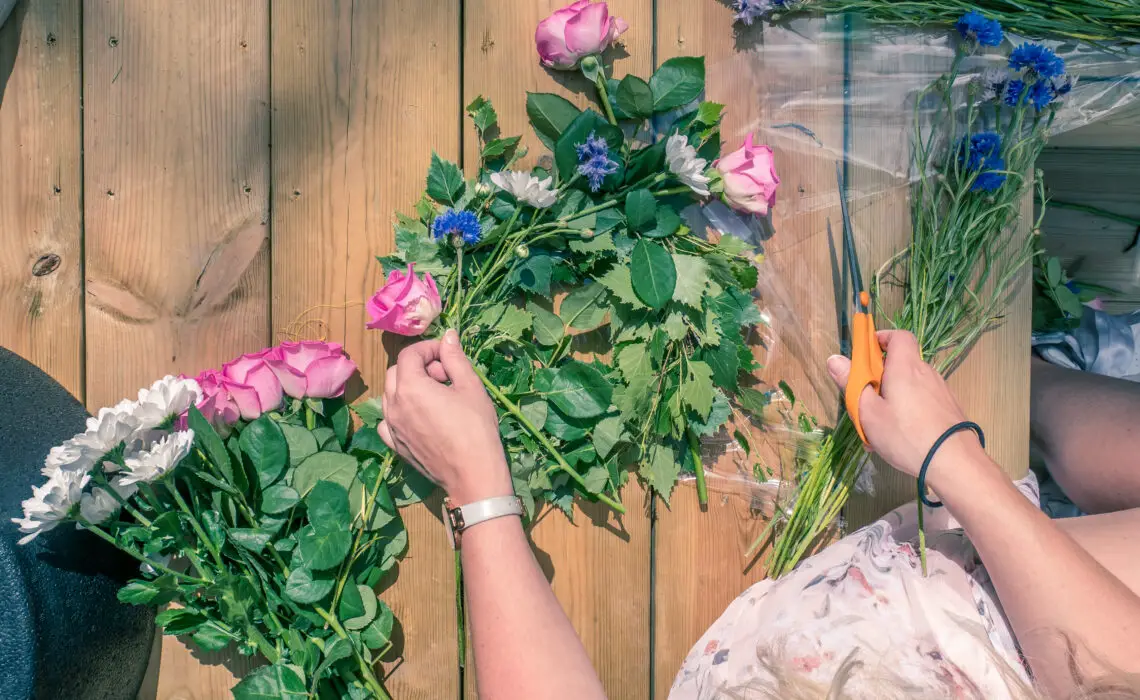
Crafting is a great way to pass the time, but did you know that it can also help build fine motor skills? In this article, we’ll be exploring the benefits of nature weaving and discussing how it can be used as a tool to help kids develop their motor skills. From what materials to use, to tips for teaching your children how to weave, read on for everything you need to know about the world of nature weaving!
Introduction: What Is Nature Weaving?
Weaving is a popular craft that has been around for centuries. It’s a great way to pass the time, and it can also be therapeutic. Weaving can be done with a loom or without one, and it doesn’t require much equipment. All you need is some yarn or string, and something to weave with, like a needle or chopsticks. Weaving is not only a fun activity, but it can also help improve your fine motor skills. Fine motor skills are the coordination of small muscles in the hands and fingers to complete tasks like writing, drawing, and buttoning clothing. Weaving requires the use of both hands and fingers to manipulate the yarn or string, which can help strengthen these muscles over time. There are many different ways to weave, so there’s no need to feel overwhelmed if you’re just starting out. Start with simple projects like placing two pieces of yarn over a dowel rod and weaving them back and forth. Once you get the hang of it, you can try more complex patterns and techniques. Who knows, you might even discover a new hobby!
Benefits of Nature Weaving
Weaving is a great way to develop fine motor skills, as it requires the use of both hands to manipulate the material. The process of weaving also helps to improve hand-eye coordination. In addition, weaving is a calming activity that can help to reduce stress and anxiety.
Tips for Starting a Nature Weaving Activity
When it comes to nature weaving, there are a few things you’ll need to get started. First, you’ll need some natural materials to weave with. This could be anything from leaves and twigs to flowers and berries. You can find these materials on a nature walk, in your backyard, or at a local park. Next, you’ll need something to use as a loom. This could be a simple frame made out of sticks, or even just a piece of cardboard. If you’re using a frame, you’ll also need something to tie the materials onto, like yarn or string. Finally, you’ll need patience and creativity! Nature weaving can be tricky, but it’s also very rewarding. Take your time and experiment with different patterns and designs. And don’t forget to have fun!
Exploring Different Types of Nature Weaving Materials
When it comes to nature weaving, there are a variety of materials you can use to create your masterpiece. Some of the most popular materials used in nature weaving include: -Twigs: Twigs are a great material to use for nature weaving because they are strong and can be easily manipulated. Plus, they add an interesting texture to your weave. -Grasses: Grasses are another popular material for nature weaving. They add a softness to your weave and can be easily braided or twisted into different shapes. -Flowers: Flowers add a beautiful touch to any nature weave. They can be incorporated into the design as accents or used to create colorful patterns. -Leaves: Leaves offer a wide variety of colors and textures that can be used to create unique designs in your nature weave. -Pine needles: Pine needles are thin and flexible, making them perfect for weaving. They also add a nice scent to your nature weave.
Examples of Nature Weaving Projects and Ideas
There are many ways to weave nature into your crafts and projects. Here are some examples: -Gather leaves, twigs, and flowers from your backyard or a nearby park. Press them in a book overnight to flatten, then arrange them however you like on a piece of construction paper or cardstock. Glue them down and let dry. You can make cards, pictures, or even coasters out of your pressed leaves! -Weave thin strips of bark or pine needles into a basket or place mat. -Make a mobile out of sticks, leaves, and flowers. Tie everything together with string or yarn. -Paint rocks with nature scenes or patterns, then glue them together to make a paperweight or doorstop.
Steps to Building Fine Motor Skills Through Nature Weaving
Assuming you have the materials necessary for nature weaving (i.e. sticks, leaves, flowers, etc.), the following steps will help you build fine motor skills through this fun and therapeutic craft: 1. Start by collecting a variety of sticks, leaves, flowers, and other natural materials. Make sure they are all dry before beginning your project. 2. Once you have your materials gathered, it’s time to start weaving! Begin by creating a basic frame with two sticks crossed in the middle. 3. To add interest and texture to your weave, start adding in different materials as you go along. You can switch up the order and placement of materials as you see fit. 4. As you continue weaving, pay close attention to the tension of your work. Keep it tight so that your finished product is sturdy and looks nice. 5. Once you’re happy with your weave, finish it off by tying the ends of the sticks together or tucking them under another piece of material. Nature weaving is a great way to relax while also working on those all-important fine motor skills! By following these simple steps, you can create beautiful and unique pieces of art using nothing but natural materials
Additional Resources
In addition to the resources mentioned in the blog article, here are some additional resources that may be helpful for exploring the benefits of nature weaving: -The Weaving Nature into Your Classroom Guide from Education Outside -The Natural Weaving Projects eBook from Planting Seeds -The Nature Weaving eBook from Green Kid Crafts -How to Make a Simple Nature Weave from One Little Project
Conclusion
Nature weaving is a wonderful way to build fine motor skills and get creative with materials found in nature. It’s especially beneficial for children, as it helps them hone their coordination and develop problem-solving abilities. Furthermore, it can be done anywhere—all you need are the right materials and some imagination! So why not give it a try this weekend? Gather up your supplies from nature, pick out a project that suits your skill level, and let the crafting begin!




